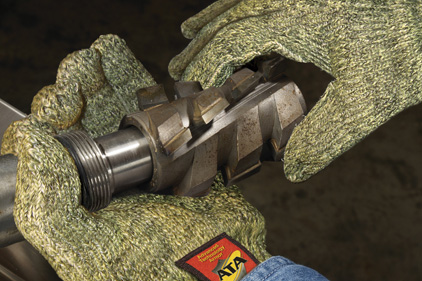Change is inevitable.
Sometimes it is slow evolution and other times it is lightning fast transition. This holds as much truth in the cut-resistant hand protection industry as it does in everyday events. In our industry, change can be slow or fast, but one thing is for sure — change is here to stay.
Flash back again to 1997. Cut protection for your hands is dominated globally by a single fiber. Para-aramid is at the top of the cut resistance food chain and is an industry favorite. This wondrous yellow fiber single-handedly changed the industrial glove market forever and set in motion a tidal wave of reform in how we protect our workers most valuable assets. No longer was the glove just four fingers and a thumb. It was now truly a vital part of on-the-job safety.
Fifteen years later, para-aramid continues to be an industry leader and end user favorite. However, much like the effect the hybrid car had on the automobile industry, people began to take notice of the alternatives. End users became more educated, more informed and more cognizant of the fact that reducing hand injuries saves money. Yarn and glove manufacturers in turn responded by trying new ideas, new formulas and new technologies — all in the quest to supply what every customer wants — better protection at a lower cost.
Innovative ideas
Ingenuity and innovation have allowed us to benefit from this new wave of technology. What once was only available in open end yarn or basic ring spun design can now be produced in dozens of configurations with multiple fibers or filaments, in any number of yarn constructions. New high performance fibers have paved the way for more application-specific hand protection solutions. Polyethylene, ballistics grade nylons, high performance synthetics and even improved para-aramids have changed the way we look at the cut-resistant glove today.
The advent of implementing fiberglass and stainless steel into yarn construction has allowed the average cut-resistant glove to not only be lighter and less costly, but also more protective and more comfortable. Customers with smaller budgets for safety and hand protection are now able to provide innovative solutions for their workers, without having to break the bank. Cut protection, in varying levels, can now be extremely affordable and maintainable.
Fiber manufacturers and suppliers continue to churn out new ideas and products that can enhance a glove in just about any safety category. No longer is a glove that protects its wearer from cut and slash injuries only yellow in color. As the awareness and importance of workplace safety continue to grow, customers are always hunting for that double whammy — reduced recordable injuries and reduced costs. Many end users feel they can now reach that once unobtainable goal.
What once was an industry with only a handful of selections to choose from has now exploded into a virtual “grocery store” of selections. Seamless knit, cut and sew, flat dipped, sewn on, reinforced, fully lined, etc. — can all be provided now in very application-specific designs or in broad, one-glove-fits-all configurations.
The introduction of industry-accepted cut resistance testing and qualification has also aided in the growth of new fibers and technologies by supporting claims of superior cut results with scientific facts. Many apparatuses are available for use to demonstrate or qualify a product’s cut resistance level and more and more people at the end user level are beginning to demand and rely on testing and certification as benchmarks for their applications. Throwing a glove onto your desk and dragging a box cutter across it is no longer an acceptable measure of protection level. Customers want solutions that actually work, and that can be cost-effective, and they want proof to back up their claims.
Several groups, such as the International Glove Association, continue to advocate for increased awareness and updates to current industry-accepted ratings. This will prove to be paramount in supporting the continual growth of innovative and unique products.
The ultimate glove
Awareness within the industry continues to grow as everyone scrambles to make the “ultimate glove.” Though a glove that can work in every single application will likely never exist, think of the incredible new designs manufacturers will think of trying to get there.



